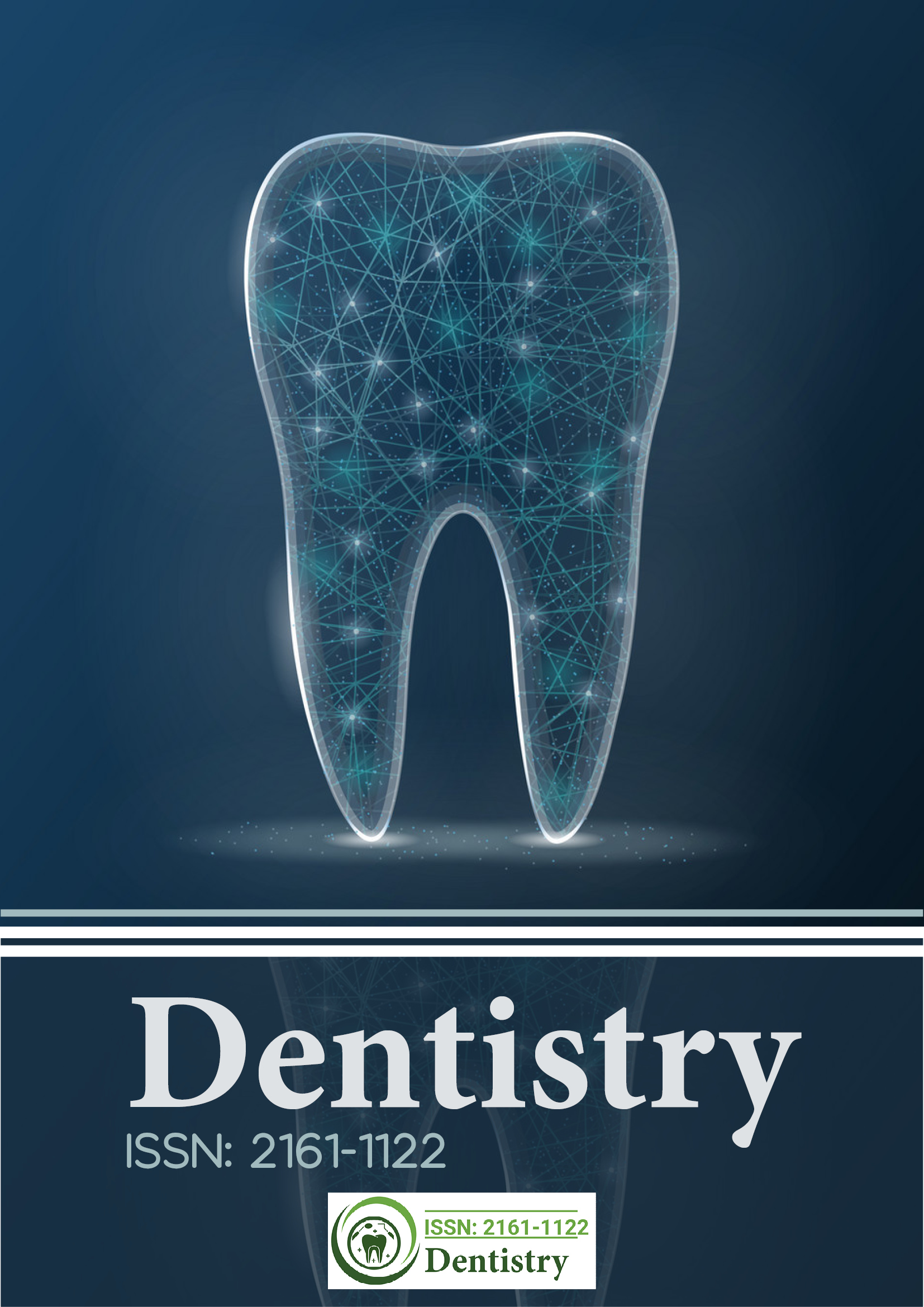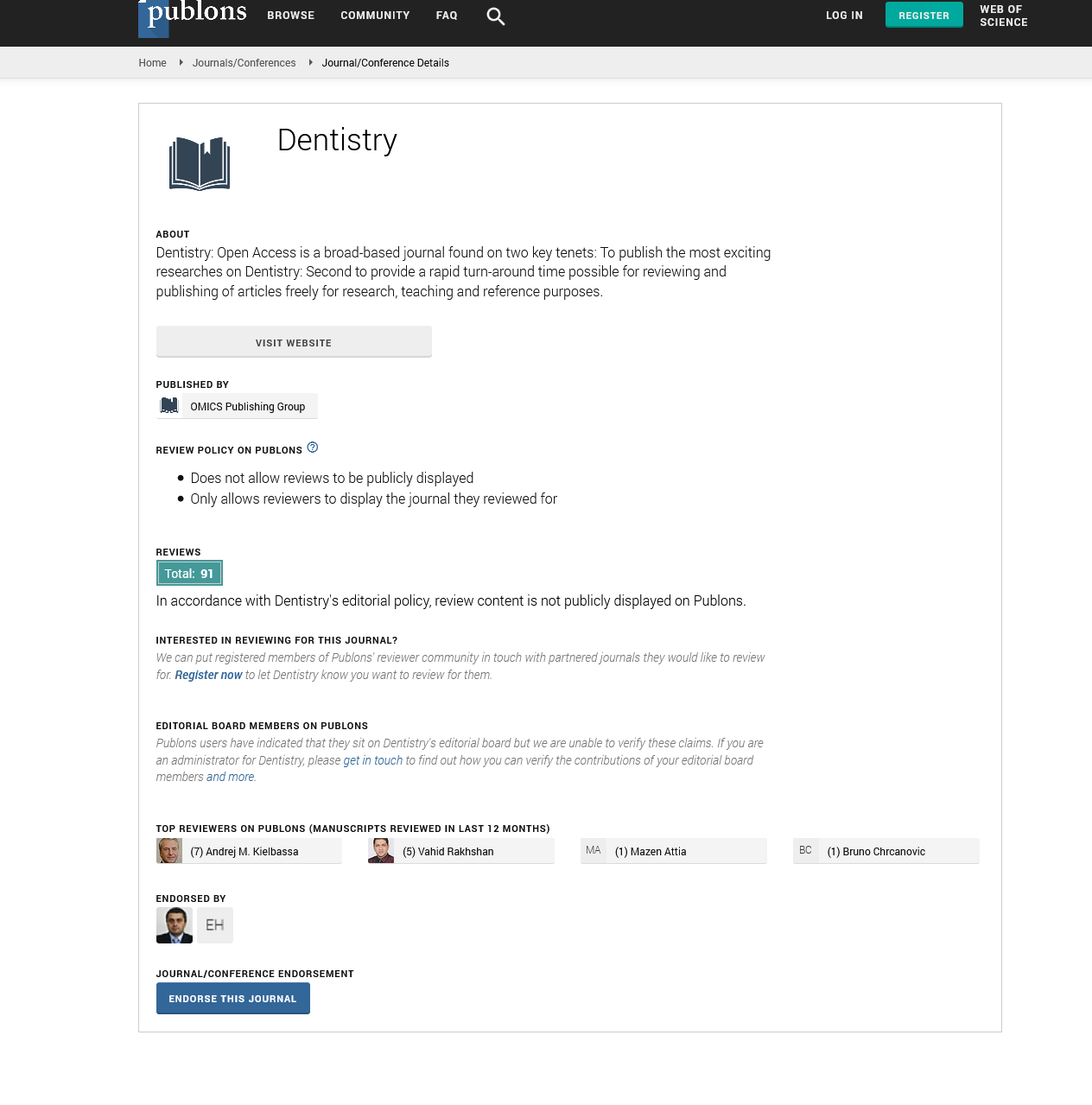Citations : 2345
Dentistry received 2345 citations as per Google Scholar report
Indexed In
- Genamics JournalSeek
- JournalTOCs
- CiteFactor
- Ulrich's Periodicals Directory
- RefSeek
- Hamdard University
- EBSCO A-Z
- Directory of Abstract Indexing for Journals
- OCLC- WorldCat
- Publons
- Geneva Foundation for Medical Education and Research
- Euro Pub
- Google Scholar
Useful Links
Share This Page
Journal Flyer

Open Access Journals
- Agri and Aquaculture
- Biochemistry
- Bioinformatics & Systems Biology
- Business & Management
- Chemistry
- Clinical Sciences
- Engineering
- Food & Nutrition
- General Science
- Genetics & Molecular Biology
- Immunology & Microbiology
- Medical Sciences
- Neuroscience & Psychology
- Nursing & Health Care
- Pharmaceutical Sciences
Reviewing excellence with team approach in maxillofacial prosthodontics
21st Annual World Dental Summit
February 26-28, 2018 | Paris, France
Maninder Hundal
Armed Forces Dental Clinic, India
Keynote: Dentistry
Abstract:
To achieve successful long term results, more creative solutions tend to come from imaginative interdisciplinary contribution. With this background; dental schools/colleges should base their curriculum not on the idea of separate subjects, but on the much more fertile idea of disciplines, which encourages a dynamic team approach for handling challenging clinical cases. Surgical treatment for neoplastic lesions of the oral cavity often requires resection involving the mandible, floor of the mouth, tongue and also palate. Mandibular deviation due to loss of mandibular bone continuity in consequence of surgical treatment, and related altered muscle function clinically results in facial asymmetry and malocclusion. The residual mandible deviates medially and superiorly, and it will be more or less evident depending on the location and extent of resection, the amount of soft tissue and innervations involvement, the presence of remaining natural teeth (the deviate mandibular movement is more evident in edentulous patients than in dentulous patients that have had a normal intermaxillary relationship). The management of such malignant tumors associated with the tongue, the mandible and adjacent structures represents a difficult challenge for the surgeon, radiologist and prosthodontist relative to both control of the primary disease and rehabilitation following the same. A corrective device named ‚??Guide Flange Prosthesis‚?Ě is indicated to limit that clinical manifestation, also waiting for a prospective reconstructive surgical treatment, and it can be applied either immediate postoperatively as intermaxillary fixation or within 7-10 days after the resection as removable device, to restore mandibular function. The main aim is to re-educate the mandibular muscles so as to re-establish an acceptable occlusal relationship (physiotherapeutic function) for the residual hemi mandible, so that the patient can adequately control repeated opening and closing mandibular movements. The success of mandibular guidance therapy depends on early beginning of the treatment protocol, the nature of surgical defect, and the patient cooperation. This sort of therapy is most successful in patients whose resection involves only bony structures, and minimally tongue, floor of the mouth and contiguous soft tissues. The prognosis further improves if radical neck dissection or radiation therapy is not involved. This is the beginning of accomplished prosthetic rehabilitation using a removable prosthesis of which artificial teeth could warrant a stable occlusion. For better results the prosthetic management can be combined with an exercise program that can be started 2 weeks after the surgery. Literature shows varying basic design of prostheses used, that can be mandibular based or palatal based anchored on natural teeth or guide flange. The aim of this scientific presentation is to bring forth the importance of timely initiated inter disciplinary interaction and planning by the surgeon and the prosthodontist besides other disciplines i.e radiotherapist, speech therapist and psychiatrist so as to achieve best possible post operative results as regards functionality and esthetics in such individuals. The same is highlighted via two case reports. Case report 1 is about an individual who was not seen by any prosthodontist prior to as well as for nearly 4 years after surgical resection of the malignancy. In the second case the individual was fortunate to experience the benefits of team approach. maninderhundal10471@gmail.com

